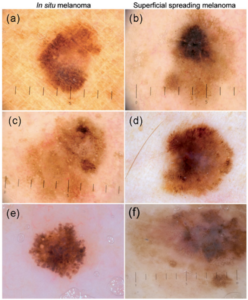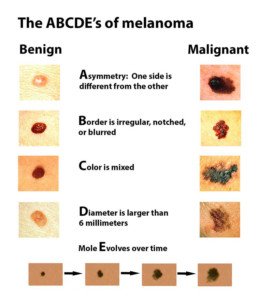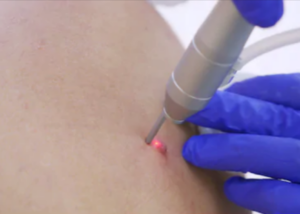
“Malignant melanoma” vs. “melanoma.”
Is there actually a difference in meaning when someone says malignant melanoma as opposed to just “melanoma”?
Whenever someone says “malignant melanoma,” or rather, WRITES this for an online article, it’s a pretty safe bet that the person who’s using this oxymoron is a layperson – a blogger or reporter of some sort.
By definition, melanoma IS malignant. Don’t be led astray when you see the double M.
To some people out there, the double M implies that just “melanoma” means a benign mole or spot!
Unfortunately, I see the use of the double M all the time on blogs and even medical sites written by so-called medical writers. It’s a common mistake.
“Melanoma is always malignant, although there are different grades and variants,” says Sharyn Laughlin, MD, board certified dermatologist and co-founder of the DermaEnvy Skincare ™ line of sun protection products and medical director of Laserderm, a pioneering laser skin surgery clinic in Ottawa, Ontario, Canada.
“The use of the term MM or malignant melanoma seems to be unnecessary and inappropriate in my opinion. The addition of malignant to melanoma is clearly redundant.”
There is no such thing as a benign melanoma. The “benign” refers to the common mole or birth mark, a skin barnacle, freckle, age spot or lentigo. Below is a guide on what to look for on your skin.

Tips on Self-Skin Exams to Screen for Melanoma
• Do self-exams once a month. More often than this is not necessary.
• Many benign conditions can cause what appears to be a new “mole.” Do not panic if you find a spot that was not previously there, but at the same time, keep an eye on it. If it doesn’t go away after a few weeks, see a dermatologist.
• Your self-exam for melanoma and other types of skin cancer should include checks behind your ears, your eyelids, inside your belly button and the soles of your feet.

 In practice for 30+ years,
In practice for 30+ years, 







































